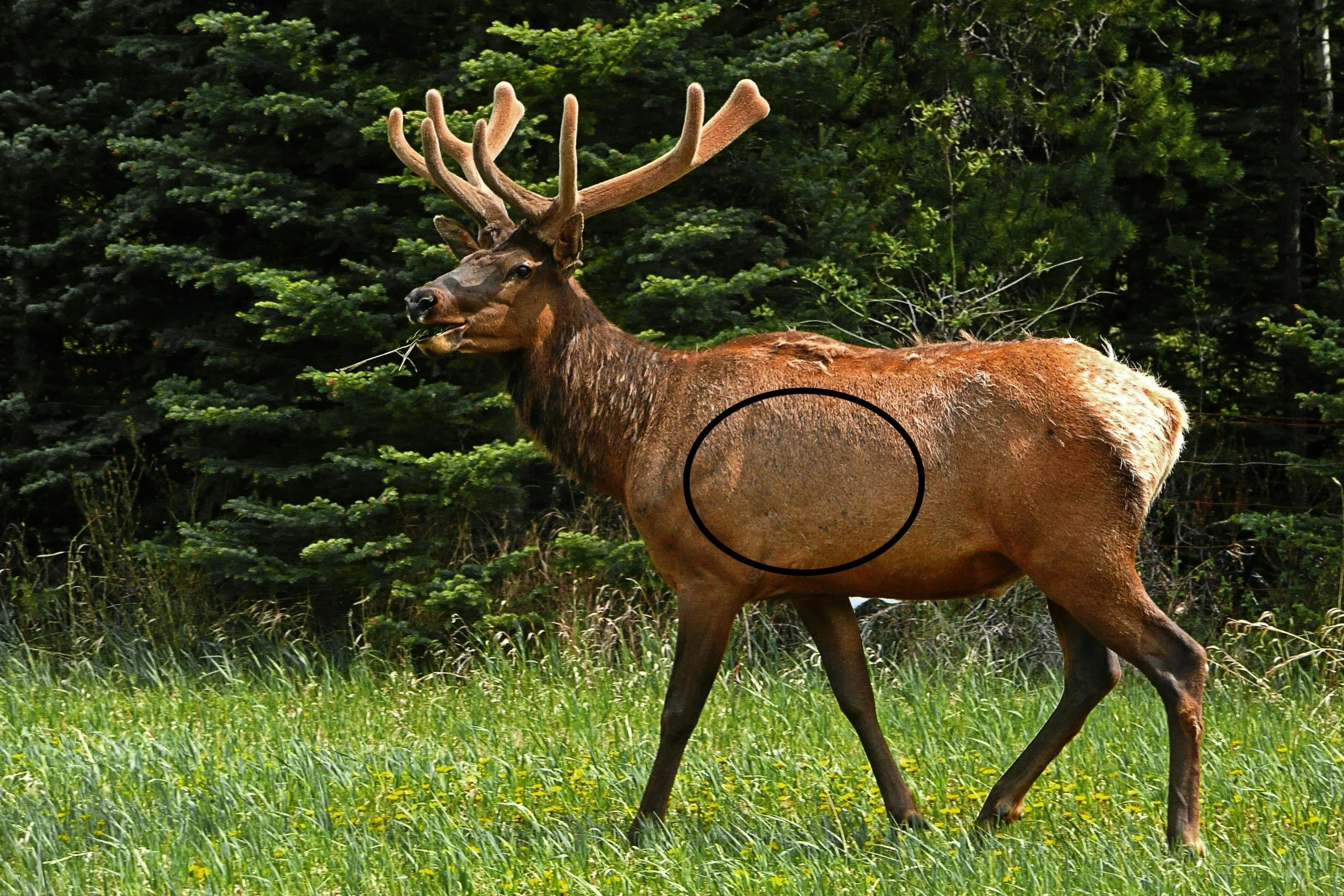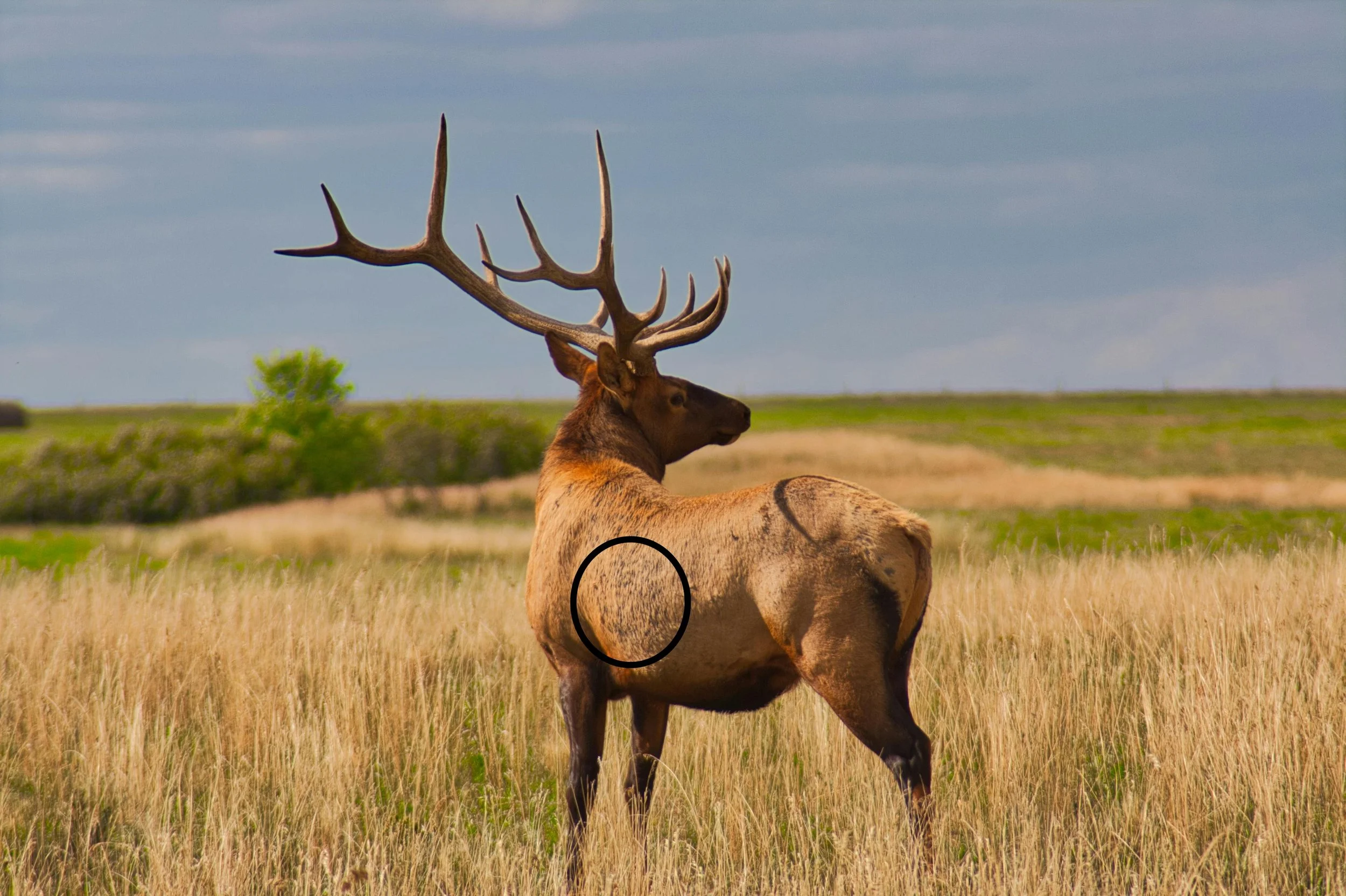Elk Anatomy: Optimal Shot Placement Guide
You can’t shoot an elk anywhere and expect it to die immediately. Hunters must be ethical, respecting animals and making sure they die as painlessly and quickly as possible. To achieve this, hunters need to be familiar with elk anatomy and make informed decisions about when to take a shot and when not to. Understanding the vital areas and proper shot placement is crucial for a humane and effective kill. There are four main positions in which an elk might face you, each with specific impact area recommendations. These positions include broadside, quartering toward, quartering away, and frontal.
Understanding Elk Anatomy
When hunting, it's crucial to ensure the elk has a quick and thorough death. This requires any hunter to know what to aim for and where it is located on the elk, which might look different depending on the size of the elk. Aim for the heart and lungs as this will cause the elk to die quickly with less pain, which is the kindest approach and increases the likelihood of a successful hit. If you hit the ribcage or shoulder blade, the bullet might glance off, injuring but not killing the elk. A spine shot can cause instant death or paralysis. While instant death sounds ideal, it is extremely difficult to hit in exactly the right spot to achieve this. Resulting in paralysis, which means a slow and painful death for the elk.
Shot Placement Strategies
Broadside Shots
Broadside shots are when the elk is completely sideways to you. This is considered by many to be the most ideal angle because it offers the best view of the lungs and heart. The entire area is in your direct line of sight, dramatically increasing your chances of a humane kill.
Pretty much the only way to go wrong is by aiming too far forward, hitting the shoulder blade or leg bone. You have room to aim higher, lower, or farther back, as the lungs cover a large area. While hitting the heart will kill the elk faster, it is a smaller target than the lungs. Thankfully the heart and lungs are adjacent and as long as you aim within this zone, you are likely to achieve a successful shot.
Even in this prime zone, the elk has built-in protection with muscles and the ribcage shielding the lungs. For those familiar with elk anatomy, they can aim between the rib bones securing a perfect, precise shot.
Quartering Away Shots
Quartering-away shots are considered by some hunters to be just as good, if not better, than broadside shots because they expose the vitals more and allow the arrow or bullet to travel through more of the animal. Unlike broadside shots, where the shoulder bone and ribs shield the vitals, quartering-away shots turn these protections aside, creating a prime angle to target the lungs and heart. So if your aim is accurate, the shot will be successful, and the death will be quick. However, poor aim presents more cons compared to a broadside shot.
The goal is still to hit both lungs, but it is not as easy with a quartering shot, although it is still possible. The angling is a double-edged sword, while it allows for a direct and unobstructed pathway into the deer, it also means a smaller target. Similar to how looking at a wall head-on, you see more of it than if you were at an angle to it, the view of the kill zone is smaller, and you must aim closer to avoid the front shoulder blade. Aiming too far down may result in the arrow or bullet not exiting the animal, causing a confusing blood trail and possibly a longer chase. Either way, you can't control the elk's position, so both broadside and quartering-away shots are both useful and necessary.
Quartering Towards Shots
Quartering toward shots are much riskier because the front shoulder blade and leg cover most of the vital area. If you shoot too far back, you might hit the stomach or intestines, leading to a slow death. Thankfully this shot vantage is not completely hopeless as there is a small opening above the elbow leading to the vitals, located after the shoulder and above the front leg. But this spot is so small and the risk so high, that many hunters consider it unethical. This shot requires absolute precision and should only be taken by very skilled and confident hunters. Usually, the elk will move, so it's best to wait for a better angle.
Frontal Shots
The frontal shot is an even more controversial shot than the quartering toward shot. This is due to the even smaller kill zone. If the target is not hit precisely, the consequences to the elk are severe, causing pain and suffering without the relief of death. Frontal shots are more likely to be bloodless because they may not create an exit wound or hit major blood vessels. Which can complicate tracking, as there is no blood trail to follow. This would result in a wasted life. Overall, the risks outweigh the benefits unless the shot is perfect. As mentioned before, the elk will probably move to a more ethical angle that promises a dignified death.
Common Mistakes and How to Avoid Them
Wind and elevation can affect your shot more than you might realize, so take them into account when aiming to know if you need to aim further to the left or right, and by how much. Lack of practice and experience can hinder your ability to make quick, instinctive decisions. If you’re not prepared, you might miss opportunities or take unethical shots that result in a wasted animal or a painful death. Over-calling and leaving areas too soon are common beginner mistakes. Be patient and use time to your advantage. Not having backup plans and ignoring terrain can also affect your shot. Similar to wind and elevation, use the terrain to your advantage and know the area well enough to adapt if one spot isn’t working.
Hopefully, you’re reading this before your next hunt, not after. Take the time to studyin-depth elk anatomy guides so you can apply this knowledge in the field. Ethical hunting involves understanding where to aim for a quick and humane kill. By educating yourself, you’re respecting the animal and improving your chances of a successful hunt. Consider going on a guided hunt if you lack the experience or know how when it comes to hunting elk.


